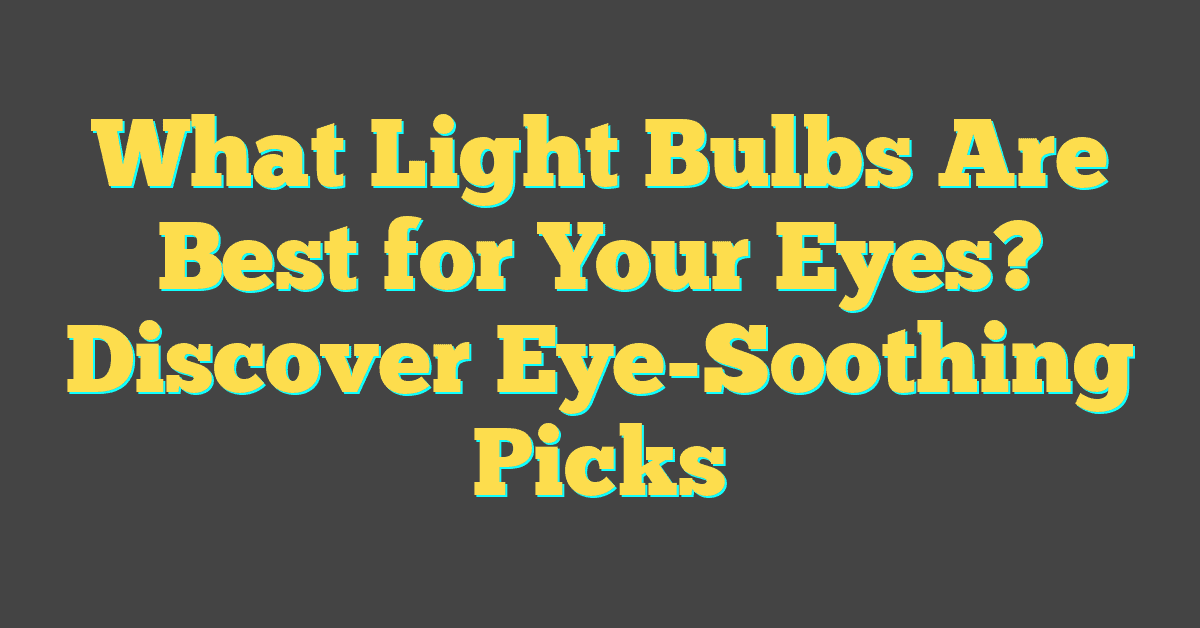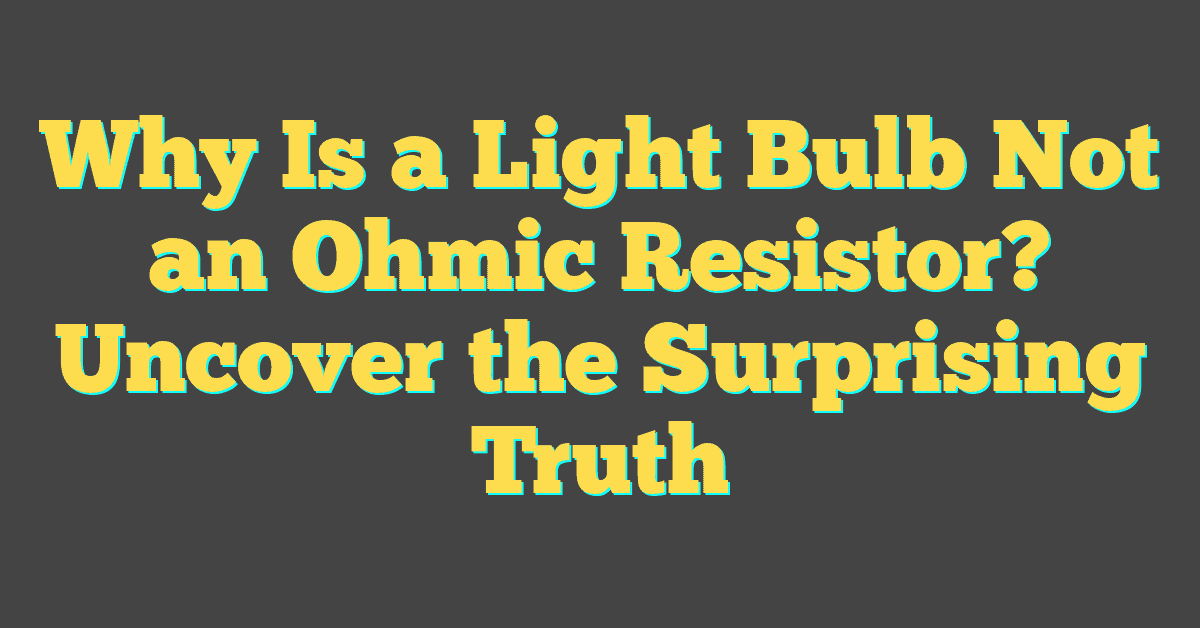Ever wondered why you can’t get certain light bulbs shipped to your doorstep in sunny California? It’s not just you—it’s a statewide puzzle that’s got many scratching their heads. You’re about to dive into the nitty-gritty of California’s unique stance on light bulbs.

History of California’s Light Bulb Regulations
California, known for its trailblazing environmental initiatives, has taken a bold stance on energy efficiency, particularly with regard to light bulbs. The story begins in 2007 when President George W. Bush signed the federal Energy Independence and Security Act (EISA). The EISA set higher efficiency standards for light bulbs across the country, but California decided to implement these standards ahead of the federal timeline. Your home state became the first in the nation to embrace these new regulations by advancing their effective date to 2018, two years ahead of the rest of the United States.
The Golden State’s aggressive push for energy-efficient lighting isn’t just about cutting down on energy usage; it’s also a matter of reducing greenhouse gas emissions. The California Energy Commission (CEC) has been proactive in setting these stringent standards as part of the state’s broader efforts to combat climate change. In your DIY projects, you know that opting for energy-efficient options doesn’t just save the planet; it saves money on electric bills too.
In 2018, the CEC updated the Title 20 regulations to further restrict the types of light bulbs that can be sold within the state. The updated rules expanded upon the EISA’s framework, focusing on ensuring that LED and fluorescent lighting replaces less efficient incandescent and halogen bulbs. These new regulations targeted specific light bulb types based on their lumen and wattage capacities:
| Lumen Output | Wattage Maximum |
|---|---|
| 310 – 2,600 lm | > 45 lm/W |
| > 2,600 lm | > 50 lm/W |
Retailers and manufacturers quickly learned that to continue doing business in California, they’d need to adhere to these standards. Non-compliant bulbs weren’t just frowned upon; they were effectively banned from being shipped into the state. This initiative reflects the broader California ethos of prioritizing not just cutting-edge design in lighting but also environmental responsibility. Your commitment to eco-friendly DIY projects aligns perfectly with California’s pioneering spirit in preserving energy and leading in sustainable living.
Energy Efficiency Standards in California

As you’re exploring the world of home DIY projects and the myriad of lighting options, you’ll quickly find that California stands out with its pioneering efforts in energy efficiency. The state’s trailblazing doesn’t just reflect a commitment to reducing greenhouse gas emissions; it’s about setting a new norm for energy consumption, and that includes lighting.
Californian energy regulations are stringent—and for a good reason. They govern not just the major appliances you’d expect but also the humble light bulbs that fill your home with warmth and clarity. The regulations hone in on the performance of these lighting fixtures, emphasizing lumen-to-watt ratios that dictate how much light you get for each unit of electricity consumed.
Now remember, lumens measure the actual amount of light emitted, while watts indicate the energy drawn. Higher lumens with lower watts equal greater energy efficiency. The specific standards set by the CEC consider these factors:
- Lumens: The brightness must be sufficient for the intended use.
- Watts: The energy consumption must be minimal.
- Lifespan: Efficient bulbs often promise longer operational life.
Diving deeper, here’s a breakdown of the CEC’s requirements that influence why some light bulbs can’t cross into California:
| Minimum Efficiency Level | Lumen Range | Power Draw Limit |
|---|---|---|
| Basic Efficiency | 450-1600 | 4-15 Watts |
| Advanced Efficiency | 1601-2600 | 10-25 Watts |
| High Efficiency | 2601+ | 15-40 Watts |
Bulbs that fall short of these brackets aren’t only subpar in utility; they’re now effectively contraband in the Golden State. When your DIY lighting project needs bulbs, know that these standards ensure you’re investing in products that are both eco-friendly and cost-effective in the long run.
The constant evolution of California’s efficiency standards might seem daunting, but it serves to push the lighting industry forward. Innovation in bulb technology, from LED to CFL and beyond, keeps manufacturers on their toes. As a DIY enthusiast, you benefit from these advancements, enjoying a broader selection of high-quality, energy-saving options for your home lighting setups.
The Ban on Incandescent Bulbs

In the world of lighting, you’re no stranger to the evolution that’s unfolded right before your eyes. Remember those classic incandescent bulbs, warming your spaces with their familiar glow? Well, those bulbs are now undergoing a significant change in California. Efficiency standards have shifted, and traditional incandescent bulbs simply don’t make the cut anymore.
The Why Behind the Ban
Your DIY projects might have been easy with those screw-in incandescent lights, but the problem lies in their energy consumption. Traditional incandescents convert more of their energy into heat rather than light, making them inefficient by today’s standards. California’s strict energy laws have set a high bar for what constitutes an acceptable light bulb — one that uses less energy and lasts longer.
« Do You Need a Special Light Bulb for Shower? Safety & Choices Revealed
Are Tail Light Bulbs Universal? Find Your Perfect Match for Safety & Fit »
The numbers speak for themselves:
| Feature | Incandescent | High-Efficiency Alternative |
|---|---|---|
| Energy Used | High (about 90% wasted as heat) | Low |
| Lifespan | 1,000 to 2,000 hours | Upwards of 25,000 hours |
| Lumen-to-Watt Efficiency | Low | High |
That means, for every 60-watt incandescent bulb you replace with a more energy-efficient option, you’re not just following regulations; you’re also partaking in a state-wide effort to lower energy usage and greenhouse gas emissions.
Consumer Impact and Industry Innovation
As an aficionado of lights and a home DIY enthusiast, you may lament the fading out of these old bulbs, but there’s an upside. These regulations have spurred an influx of innovative lighting solutions. Now, with a variety of LED and CFL bulbs on the market, you’re never short of options that are both long-lived and energy conserving.
Manufacturers are being pushed to design bulbs that meet the rigorous California Energy Commission requirements. This promotes innovation in the lighting industry, which translates to better products for you. More than just providing light, these bulbs come with added features such as dimming capabilities, improved light quality, and advanced technology that can interact with smart home systems.
The Impact of Mercury in Compact Fluorescent Bulbs

Compact Fluorescent Lamps (CFLs) have gained popularity in the race to reduce energy consumption. But as you’ve embraced these nifty bulbs for your DIY lighting projects, you’ve also had to consider their environmental impact. CFLs contain a small amount of mercury—essential for emitting light but problematic when it comes to disposal.
When broken, improperly disposed of, or shipped to landfills, CFL bulbs release mercury into the environment. This becomes a serious concern for both wildlife and human health. Mercury contamination can cause significant damage to the nervous system and is especially dangerous for developing fetuses and young children.
But let’s talk numbers to understand the scale of the problem:
| Aspect | Detail |
|---|---|
| Average Mercury Content in CFLs | 4 milligrams per bulb |
| Safe Mercury Exposure Level | Zero, any exposure poses health risks |
| Number of CFLs Sold in the US | Over 2 billion since their introduction |
Realizing these concerns, California maintains strict regulations on mercury-containing products. The disposal protocols are rigorous to prevent environmental contamination, and these safety measures extend to shipment regulations. The challenges in ensuring the safe transit of CFLs without any breakage or accidental exposure to mercury contribute to the restrictions on shipping these bulbs to the state.
Efforts are now in place to ensure that consumers can safely recycle CFLs, with many retailers’ offering drop-off points. Yet, as you keep an eye out for the next brilliant lighting solution for your home projects, you might be shifting attention to LED bulbs—not just for their longevity and energy efficiency but also because they don’t carry the same environmental risks as their CFL counterparts. These innovations are reshaping the lighting industry, allowing you to brighten your home responsibly while remaining in line with California’s progressive environmental standards.
LED Bulbs and California Regulations

In your quest to brighten up your home while staying eco-conscious, you’ve likely heard about California’s tight grip on environmental regulations, especially when it comes to lighting. The Golden State has been at the forefront of environmental protection with legislation that pushes for energy efficiency and reduces hazardous waste. So it’s no surprise that California has set the bar high for LED bulbs, which must meet a stringent set of performance standards.
Title 20 and Title 24 are the key players in California’s regulatory playbook. These regulations set precise standards that all LED bulbs must meet before they can be sold in the state. Title 20 focuses on energy efficiency and the quality of the light, such as color rendering and consistency, while Title 24 addresses building standards, including lighting requirements for both residential and non-residential spaces.
Here’s why LED bulbs are getting the spotlight:
- Energy Efficiency: LED bulbs consume significantly less power than their incandescent and CFL counterparts.
- Longevity: These bulbs have an impressive lifespan, often lasting years longer than other types.
- No Hazardous Materials: Unlike CFLs, LEDs don’t hold any mercury, making them safer for you and the environment.
The standards California has enacted aren’t just about preventing any old light bulb from crossing state lines. They are focused on high-quality, energy-efficient designs that contribute to the state’s ambitious climate goals. As a DIY enthusiast and someone who appreciates good lighting, you can appreciate the effort to reduce greenhouse gases and energy consumption through these innovative lighting solutions. When shopping for LED bulbs, always look for the California Energy Commission (CEC) certification to ensure you’re getting a product that meets the latest standards.
And remember, while these regulations might seem restrictive, they’re setting a precedent for responsible consumption and innovation in the lighting industry. Whether you’re retrofitting an old lamp or designing your dream home lighting scheme, these guidelines will help light your way to a brighter, greener future.
Conclusion
Navigating California’s LED bulb regulations might seem daunting at first but it’s all about embracing change for the better. You’re not just buying a bulb; you’re investing in a sustainable future and supporting innovation that benefits everyone. Remember to check for the CEC certification to ensure you’re getting a product that shines bright in both performance and environmental friendliness. Let’s light up our homes with the confidence that we’re making smart, eco-conscious choices.
Frequently Asked Questions
What regulations must LED bulbs meet to be sold in California?
LED bulbs in California must comply with performance standards set by Title 20 and Title 24, focusing on energy efficiency and light quality to be sold in the state.
Why has California implemented strict regulations on LED bulbs?
The strict regulations are part of California’s commitment to environmental standards. They are designed to promote energy-efficient and high-quality lighting options that align with the state’s climate goals.
Are LED bulbs energy efficient?
Yes, LED bulbs are highly energy efficient, have a longer lifespan, and do not contain hazardous materials like mercury, making them an environmentally friendly lighting option.
What should consumers look for when purchasing LED bulbs in California?
Consumers should look for the California Energy Commission (CEC) certification when purchasing LED bulbs to ensure they meet the state’s latest energy efficiency and quality standards.
How do California’s LED bulb regulations benefit consumers?
California’s LED bulb regulations ensure that consumers have access to quality lighting products that contribute to energy savings and long-term cost reductions, while also supporting the state’s environmental objectives.




